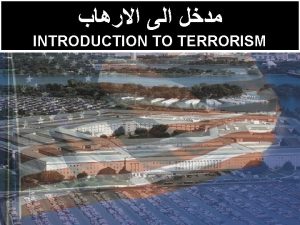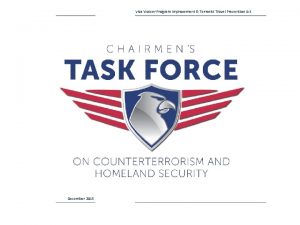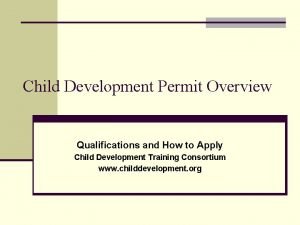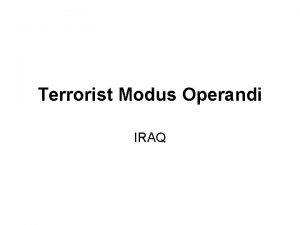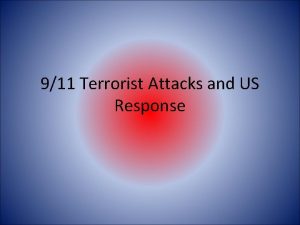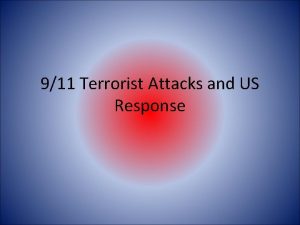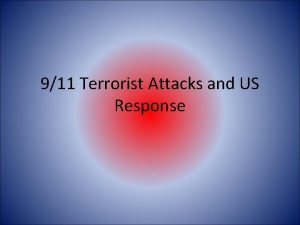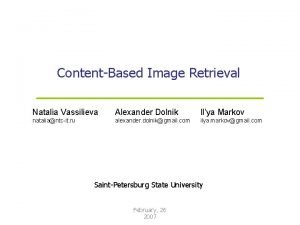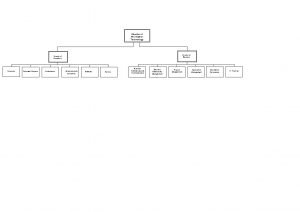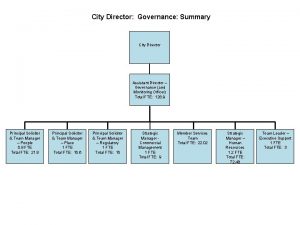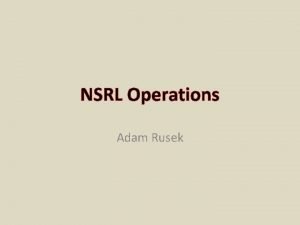What makes a terrorist Dr ADAM DOLNIK Director














- Slides: 14

What makes a terrorist? Dr. ADAM DOLNIK Director of Research Programs Centre for Transnational Crime Prevention University of Wollongong Australia adamd@uow. edu. au

What motivates terrorists? n Terrorism choice n Terrorism is product of strategic is a product of psychological forces

Limitations of terrorism research n n n Lack of a common definition Descriptive / anecdotal Event driven Fire-fighter approach / “Silver bullets” Western bias One sided bias Simple answers / vested interests Enclosed, circular research system Statistics Difficulty in accessing subjects Limits of retrospective accounts

Typology of Approaches n n n n Psychological Physiological Political / Socio-economic Organizational Ideological / Cultural Social network analysis Multi-disciplinary approach

Psychological n n n n Terrorists as mentally ill (“psycho-logic”) Narcissistic rage (splitting/externalization) Airplane hijackers study (expression of illness) Psychiatric research has failed identify any universal idiosyncrasies Terror groups do not desire psychopaths Learning from experience Differences based on level of support & isolation “…the outstanding common characteristic of terrorists is their normality”

Physiological n n n Just like all mammals, we are aggressive Mechanisms for initiation and regulation of aggression Nurture or nature?

Find the cause of conflict on the map n n Limbic system Threat Increased limbic activity Changes in organism Aggressive behavior

Regulation of aggression n Affective vs. predatory aggression n Different source for each type n In-group vs. Out-group aggression n “Murderer” vs. “Hero”

Social / Economic/ Political n n n n Terrorists are not born, they are made “Root Causes” (i. e. political oppression, lack of development, democracy, education, sex etc. ) (relative) Deprivation-Frustration-Aggression hypothesis Perception of injustice Revenge Role of education? Social distance But why in some contexts and not in others?

Process of Ideological Development “It’s not right” “It’s not fair” “It’s your fault” “You are evil” Stereotype Perception of deprivation Inequality and resentment Blame / Attribution Demonization/ Dehumanization Context Comparison Attribution Reaction

Organizational n n n Terrorism is a group phenomenon Belonging, value re-enforcement, danger, friendships, status “Group Think” (central authority, invulnerability, excessive risk taking, morality, conformity, ignoring options, moral disengagement, semantics, silence, pressures to act) n n n “Brainwashing” and exploitation With us or against us: the heroes, the enemies and the insignificant “Black and white” vision of the world

Who are the terrorists ? n Universal profile? “SOLDIER/POLICEMAN” n Universal attributes? “FRUSTRATION” “VICTIMIZATION” “HUMILIATION” “EMPATHY” “ENEMY” “EMPOWERMENT” “CHANGE”

“Home-Grown” Terrorism

Conclusions n n n n n All approaches have a merit All approaches have weaknesses Combination of circumstances and personality Beware of simplistic generalizations Specificity vs. representativeness Individuals vs. groups Definitional issues Motivations and causes may shift over time “Seeing the world through their eyes”
 Terrorist
Terrorist With up so floating many bells down
With up so floating many bells down Terrorist
Terrorist Wie wird man terrorist
Wie wird man terrorist Terrorist travel prevention act
Terrorist travel prevention act Adam adam facebook
Adam adam facebook The text-based director, also known as the
The text-based director, also known as the Assistant director vicky
Assistant director vicky Director of technical education hp
Director of technical education hp Development acrostic poem
Development acrostic poem Child development matrix
Child development matrix Wrap it up hand signal
Wrap it up hand signal Actor director musician
Actor director musician Director
Director Director de el espectador
Director de el espectador


